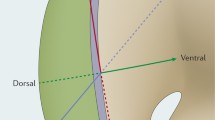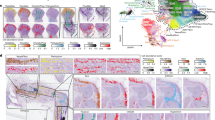Abstract
The vertebrate limb is a powerful model system for studying the cellular and molecular interactions that determine morphological pattern during embryonic development. Recent advances in our understanding of these interactions have shed new light on the molecular mechanisms of vertebrate limb development, evolution and congenital malformations. The transfer of information has, until recently, been largely one way, with developmental studies informing our understanding of the fossil record and clinical limb anomalies; however, evolutionary and clinical studies are now beginning to shed light onto one another and onto basic developmental processes. In this review, we discuss recent advances in these fields and how they are interacting to improve our understanding of vertebrate limb biology.
Similar content being viewed by others
Author information
Authors and Affiliations
Additional information
Received: 19 October 1998 / Accepted: 12 November 1998
Rights and permissions
About this article
Cite this article
Cohn, M., Bright, P. Molecular control of vertebrate limb development, evolution and congenital malformations. Cell Tissue Res 296, 3–17 (1999). https://doi.org/10.1007/s004410051261
Issue Date:
DOI: https://doi.org/10.1007/s004410051261




